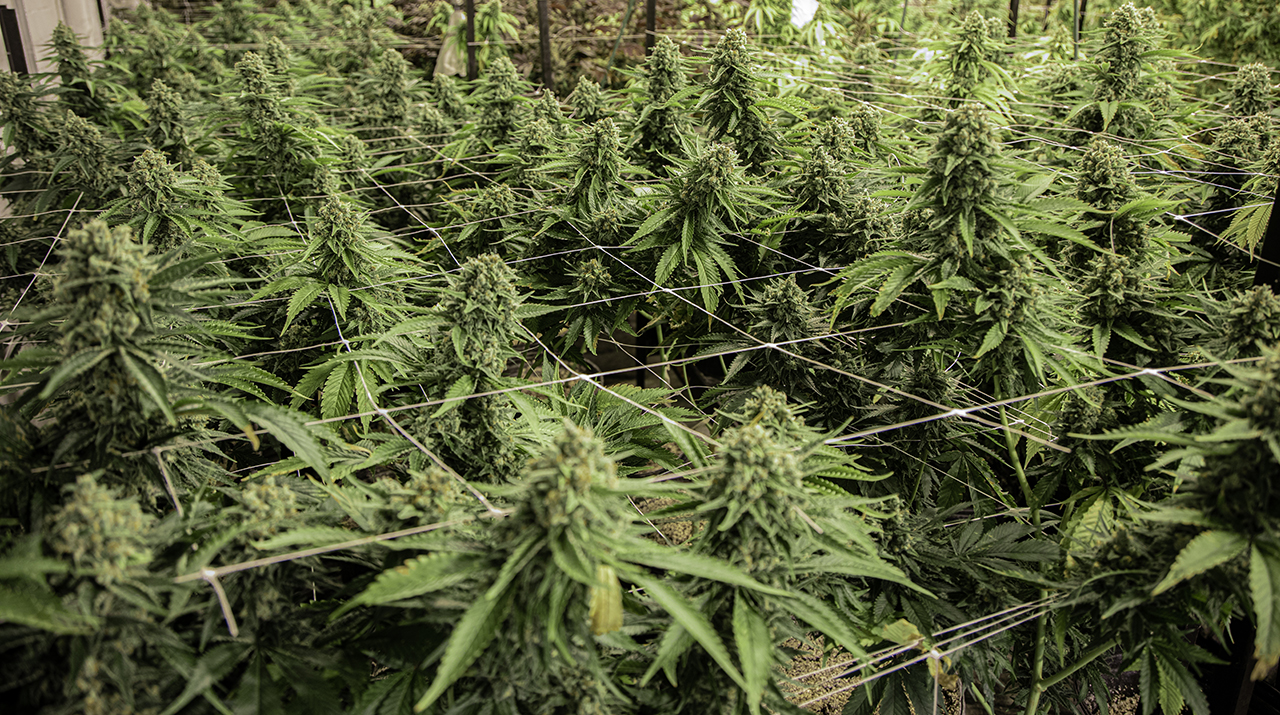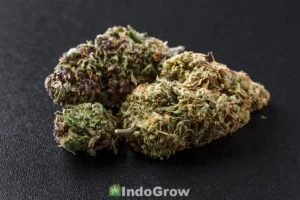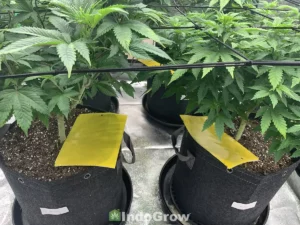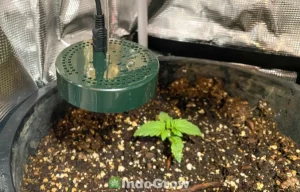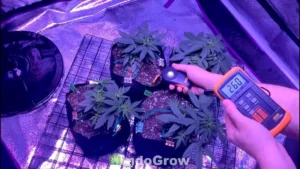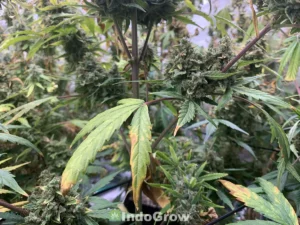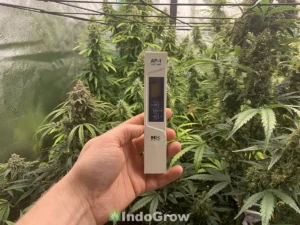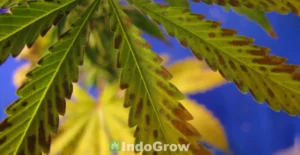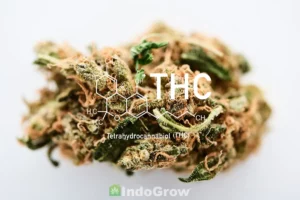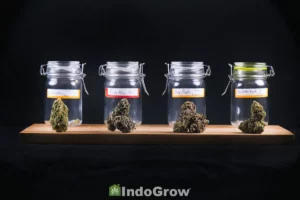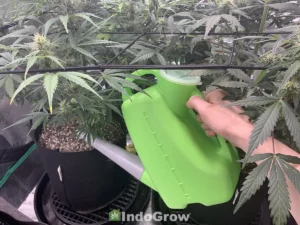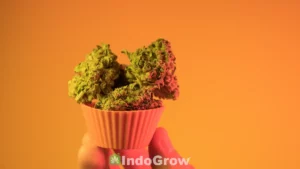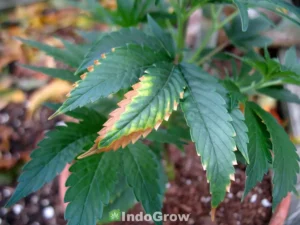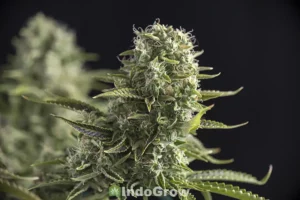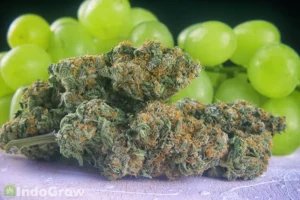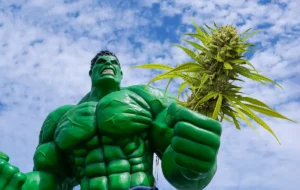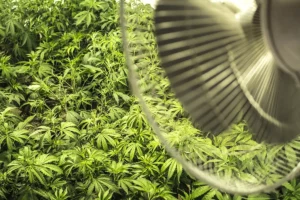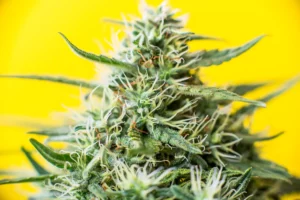Low stress training weed offers a gentle way to break the apical dominance of your cannabis plant by training it to grow in a wide, horizontal pattern. Without intervention, the top of the cannabis plant will grow directly towards the primary light source. As the plant grows, this pattern of growth causes the lower branches to become shaded by the upper branches and unable to photosynthesize effectively.
Reshaping the plant with low stress training allows all regions of the plant to receive sufficient light to grow and flower, potentially increasing bud yields by 50% or more over an untrained plant. A plant which has undergone low stress training will make more efficient use of limited space and lighting resources indoors.
Table of Contents
- What is Low Stress Training or LST?
- This History of Low Stress Training
- Benefits of Low Stress Training
- How Does Low Stress Training Work?
- Topping Plants
- Bending Stems and Tie Down
- How to Secure Ties when Low Stress Training
- What to Do if You Break a Stem?
- Topping Cannabis Plants
- When to Stop Low Stress Training?
- LST for Auto-Flowering vs Photoperiod Strains
- Best Equipment for Low Stress Training
- Summary
What is Low Stress Training or LST?
Low stress training weed involves the technique of bending and/or tying the cannabis plant’s main stem and branches into a horizontal position. When done properly, an LST plant will be wider and shorter than an untrained plant, allowing far more of the plant’s leaves to be exposed to the grow light.
An untrained cannabis plant will display apical dominance, meaning that the apex (top) of the plant will grow directly towards the light source. This leads to Christmas tree shaped plants which typically grow one large bud at the top and many smaller buds along the sides. In comparison, an LST plant has most or all of its branches exposed to the grow light, allowing it to grow many large buds.
This History of Low Stress Training
The strategy of training plants to grow more efficiently has been around in agriculture for centuries. Plants such as wine grapes and fruit trees are trained to grow into specific shapes that maximize sun exposure and fruit yield. Reshaping these plants also makes harvesting their fruits far easier, since there are no branches growing in difficult to reach locations.
For indoor grown cannabis, light and space resources are limited, making low stress training essential to get the highest yield from the resources available to the plant. Artificial grow lights do not hit the plant from multiple directions like sunlight does, even in a grow tent, so a plant with a flat canopy is far better suited to live under artificial lighting than a traditional, apically-dominant plant. That being said, outdoor plants can also benefit from low stress training, since the upper branches tend to shade the lower ones as the plant grows, which can reduce yield.
Benefits of Low Stress Training
The primary benefit of low stress training is an increased yield of large buds, with LST plants often producing over 50% more buds than an untrained plant. Arranging the branches of the plant horizontally rather than vertically allows the leaves to take in far more light, and produce more energy for the growing plant. Additionally, a trained plant is more space efficient, producing a larger amount of end product on a smaller plant. This can allow cannabis to be grown in areas that might otherwise be unsuitable for a tall, bushy plant.
The flat canopy of a trained plant is also easier to work with, as the plant’s branches are not stacked on top of one another and can be accessed without having to reach into the plant. Having the buds of the flowering plant arranged on a flat plane can also make harvesting buds faster and easier.
How Does Low Stress Training Work?
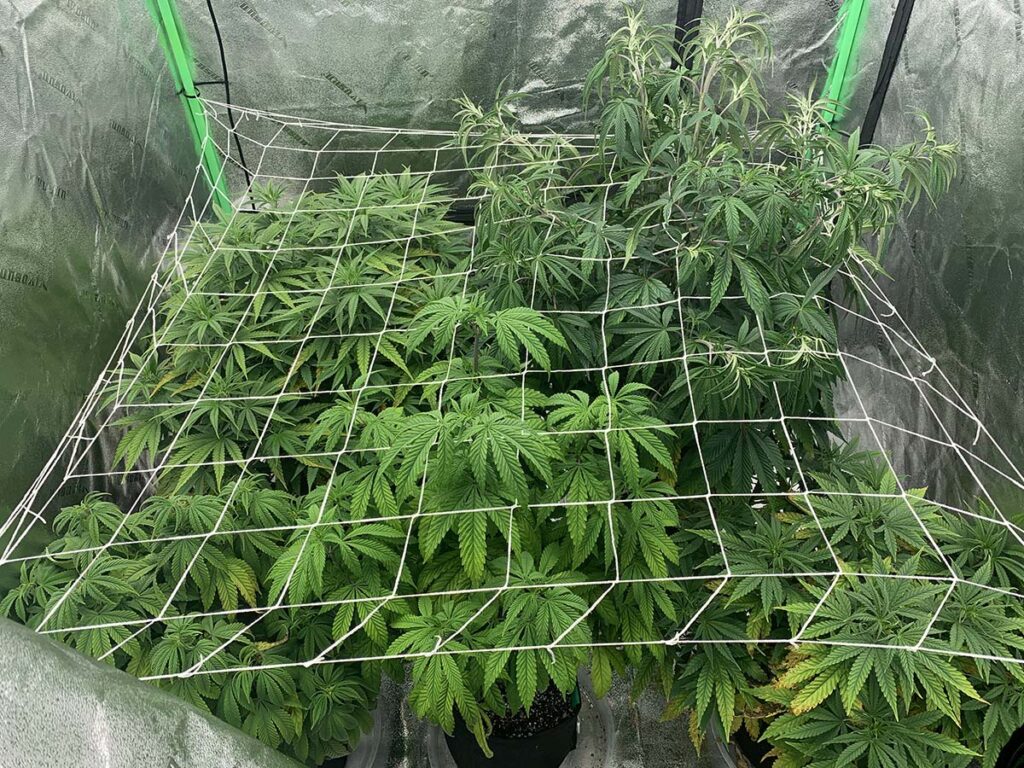
Low stress training works by gently reshaping the plant from a standard christmas tree shape into a flattened shape. The main stem is first bent horizontally and tied down to a support. As new branches grow on the plant, these are also pulled to the sides and tied down to keep them all at approximately the same height as each other.
Each branch will continue to lengthen with age, so the grower must occasionally adjust the ties to keep the branches growing in the desired direction. Some growers will train their plants into specific shapes, such as spirals, to further increase space efficiency. Others will simply focus on creating a flat canopy without additional shaping.
Topping Plants
Topping plants is the process of cutting off new growth on the main stem in order to encourage further branching. Once a young plant has 6 to 8 nodes, the grower can cut off the top of the main stem in between two nodes. This causes the plant to begin developing the two growth tips at that node into new branches, each of which can grow its own bud.
While careful topping can lead to a denser plant with more buds, it is actually considered a type of high stress training. Cutting the new growth off of the plant will generally delay its growth by several days. Because of this, it is important to monitor the overall health of the plant and give it time to recover in between cuts.
Bending Stems and Tie Down
Low stress training a cannabis plant should begin early, while it is in the vegetative phase and its stems are still flexible. The stems should be tied with items such as plant tape, coated wires, or fuzzy pipe cleaners. Hard, inflexible ties such as metal wire or rope can damage the stems.
The ties can be attached to support posts or holes drilled into the rim of the plant’s pot. As you work, make sure the plant is secured snugly to its support, and is not constricted or at risk of snapping. Consider that the plant will get heavier and larger as it matures, and may need adjustments from time to time.
How to Secure Ties when Low Stress Training
Secure your plant’s stems to the chosen support using a soft tie down such as those mentioned above. The tie must be tight enough to hold the plant in place, but not so tight that it cuts into the stem.
Because your ties will likely need to be adjusted in coming weeks, don’t use a tying method that is difficult or impossible to remove. Items such as pipe cleaners can be twisted on and off the stem many times without issue. In comparison, tight knots and household tapes are much harder to adjust.
What to Do if You Break a Stem?
Don’t worry too much if a stem breaks during low stress training. Small breaks can often be repaired by taping the affected area of the stem for support. Cannabis plants are robust growers, and can usually repair minor damage to their stems without issue.
If the stem is badly mangled or breaks off completely, trim the branch back to just above the next healthy node. Similar to intentional topping, the plant should begin growing new shoots from the node after a few days.
Topping Cannabis Plants
Topping weed plants is technically a form of high stress training, but is generally recommended for photoperiod strains. Topping is the process of cutting the main stem during the vegetative stage in order to encourage branching. Once a plant has at least 6 nodes, you can cut off the top of the main stem in between the 5th and 6th nodes. This causes the plant to begin developing the two growth tips at that node into new branches, each of which can grow its own cola.
Topping a cannabis plant will generally delay its growth by a few days. Because of this, it is important to monitor the overall health of the plant and give it time to recover in between toppings. Photoperiod strains should never be topped during the flowering stage and autoflower strains should never be topped at all.
When to Stop Low Stress Training?
Low stress training should continue through the entire vegetative phase to ensure that the plant has a good flat canopy before flowering begins. You can continue to adjust the shape of the plant during the first 2-3 weeks of flowering until the plant’s stretch period is over and its stems harden. Once the flowers are fully formed, continued LST will not affect the final bud size and instead risks snapping the now hardened stems of the cannabis plant.
LST for Auto-Flowering vs Photoperiod Strains
LST is a valuable strategy for both photoperiod and auto flowering strains. Because autoflowers reach the flowering stage faster, it is essential that you decide whether or not to use LST during the first few weeks of the plant’s life. Photoperiod strains will also benefit from early training, but they can be trained any time up to the early flowering phase and still show some gains in bud size.
As mentioned previously, autoflowering plants should not be topped. Because they progress to the flowering phase much faster than other plants, they do not have time to recover from the stress caused by topping. Photoperiod strains have a longer vegetative phase, giving them ample time to continue their growth after one or more topping sessions.
Best Equipment for Low Stress Training
Low stress training is a relatively simple training technique and does not require any expensive equipment. That being said, there are a few items you will need to get started.
- Trellis net or rigid screen to place at the top of the canopy
- Soft, bendable ties for tying branches to the net and/or plant stakes
- Plant stakes to tie branches to if desired
- Bamboo poles can be used for additional support
- Pruning shears if you intend to top
- Duct tape is useful if a stem breaks
Summary
Low stress training is a simple and useful technique to increase your harvest and save space in your growing area. The strategy of reshaping a plant’s natural growth patterns has existed in farming for hundreds of years, and provides numerous benefits to both the plant and the grower. A trained plant has far more of its branches exposed to its light source, and can photosynthesize far more efficiently than a bushy, untrained plant. The flat-topped shape of a trained cannabis plant leads to the growth of many bud sites. In contrast, an untrained plant will have only a single large cola at the top and many smaller buds on the lower branches.
Low stress training can begin within the first few weeks of the plant’s life, while it is in the vegetative stage. The main stem of the plant is gently bent down and secured using a soft, flexible tie to a support post or to a hole in the side of the pot. As new branches grow on the plant, these are also pulled down and tied so that every branch is arranged horizontally. This leaves the plant with a wide, flat canopy ideal for photosynthesis. Once the plant’s stems become hardened in the early flowering stage, LST training should be stopped to avoid snapping any branches.
While low stress training is a valuable technique on its own, many growers choose to pair it with the high stress technique of topping. Topping involves cutting off the new growth of the cannabis plant in between two nodes, and can be started once the plant has about 6 total nodes. This technique will halt the growth of your plant for a few days while it recovers, but after this recovery period, the plant will begin to grow two new branches. Ultimately, adding topping to your training strategy can lead to a fuller plant with a greater number of bud sites. However, topping is not recommended for autoflowering plants, since these fast growing strains do not have time to recover before flowering begins.

Rocky Horton
Author
Rocky Horton is an experienced cannabis grower and the founder of IndoGrow. The IndoGrow editorial team has over four decades of combined growing experience. Learn more.

